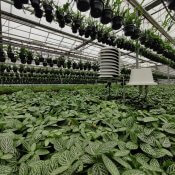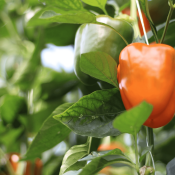LED or SON-T: the impact on your climate
LED or SON-T: The Impact on Your Climate
Are you in the process of, or considering, switching from SON-T to LED lighting? Besides energy savings, this switch impacts your greenhouse climate. Learn about the three effects you need to monitor.
In recent years, LED lighting has become the new standard, replacing the once-dominant HPS (SON-T) lamps. These LED lamps are significantly more efficient. Greenhouses that have switched to LED save up to 40-60% energy. Additionally, growers have more control over the light spectrum received by the plants, which greatly impacts plant morphology and thus yield.
However, the transition from SON-T to LED brings several practical challenges. The type of lamp has a significant effect on the greenhouse climate. LED lamps produce much less radiant heat than SON-T lamps. The plants receive more light but less heat. Keep an eye on the following effects:
- Evaporation: Due to the reduced radiant heat, evaporation decreases. This can have several effects. In tomato cultivation, for instance, this can lead to calcium not reaching the top of the crop properly, which reduces the quality of the harvest.
- Humidity & Disease Pressure: The heat released by SON-T lighting needs to be vented adequately. This also ensures that humidity does not get too high. When switching to LED lamps, the windows remain closed more often to retain as much heat as possible. Humidity can rise dangerously, increasing disease pressure.
- Plant Balance: The balance between generative and vegetative growth is essential for healthy plant development. LED lighting affects this balance due to changes in light and heat conditions (RTR). High light intensity with too little heat can promote vegetative growth at the expense of generative growth, leading to an unfavorable plant balance. It’s important to monitor and regulate the RTR properly, for example, by adjusting lighting and climate control.
A microclimate sensor placed strategically in the greenhouse helps you monitor evaporation, humidity, and the RTR balance. Confidently transition towards energy savings. Interested? Contact Tessa for a consultation at t.ridderikhoff@30mhz.com.


30MHz is typing… Our extended support team is ready to chat!
At 30MHz we think it’s important that our users can use our platform in an optimal way. At times you may have questions and you would like some help from our support team. Email and our support page filled with helpful articles were your go to’s. But we thought it was time for something extra… ...Read more
New 30MHz connect casing: How we protect your tech
To make sure your dataflow is fully protected, 30MHz introduces a new connect casing: waterproof, dust proof and even resistant to hits. This special shield will last longer and ensure a reliable dataflow from the connected sensor. What does that full protection mean? That’s what we will explain in this article. Watertight: resistant to wetness ...Read more
Smart assistant at work
After the launch of the smart (AI) assistant at GreenTech, the first growers have started using this new feature. The assistant helps them gain insights from their data faster and supports daily decision-making in the greenhouse. Growers report that they use the assistant for: Calculating differences in water content throughout the day Quickly identifying trends ...Read more


